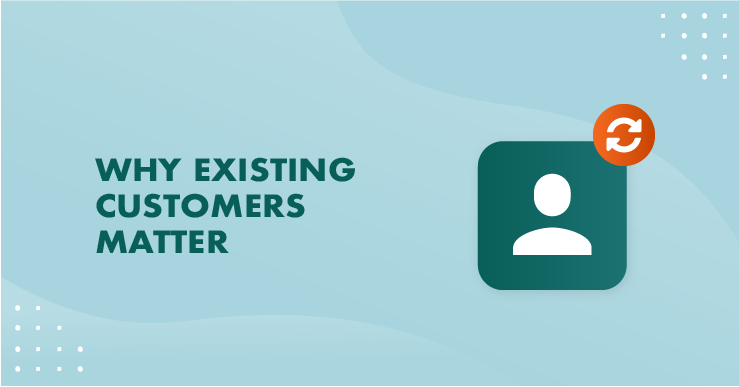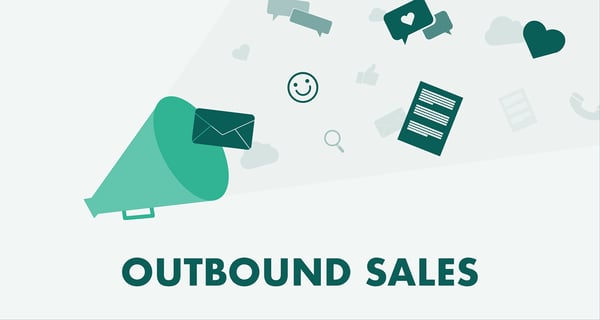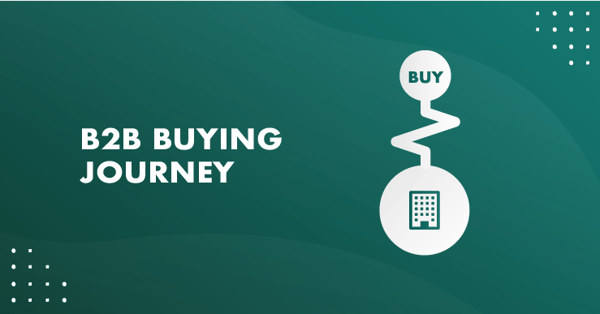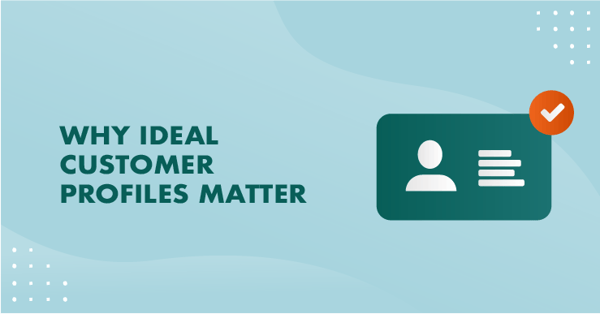Are you finding it tough to close new business deals and increase revenue?
A recent report by Paddle shows that while B2B sales is starting to recover, they’re still down 31% compared to a year ago:
- Budgets are cut
- Discretionary spending is limited
- B2B buying processes are more difficult to navigate than ever
Despite all the turmoil, you can still increase revenue this year.
How? 👉 By focusing more on your existing customers.
Your customer base presents a huge opportunity to hit your business goals.
This is because when relationships last, revenue grows.
In this article we outline why existing customers matter more than ever and how investing in selling to them could help you increase revenue by as much as 30% this year.
We’ll explore the pros and cons of growth via new business vs. existing customer expansion, as well as uncover 7 reasons why you should focus more on existing customers.
New business sales: pros and cons
Whether you call it new business, net new revenue, or customer acquisition, it all amounts to the same thing – closing sales deals with a brand-new customer.
These new sales are an important part of your overall revenue generation strategy.
Without them, you’ll become overly reliant on your existing customers for all your growth.
However, landing new customers is expensive, with the average customer acquisition cost (CAC) in B2B as high as $536.
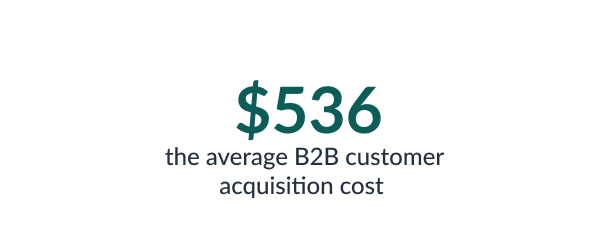
In addition, it can take at least 4-6 months to close a new sale and as long as 12+ months for larger deals.
When you consider the time and effort involved in selling and supporting new customers, it becomes clear that new business sales are not quick and easy revenue. Still, it is important.
Focusing on new business sales as a source of revenue has pros and cons.
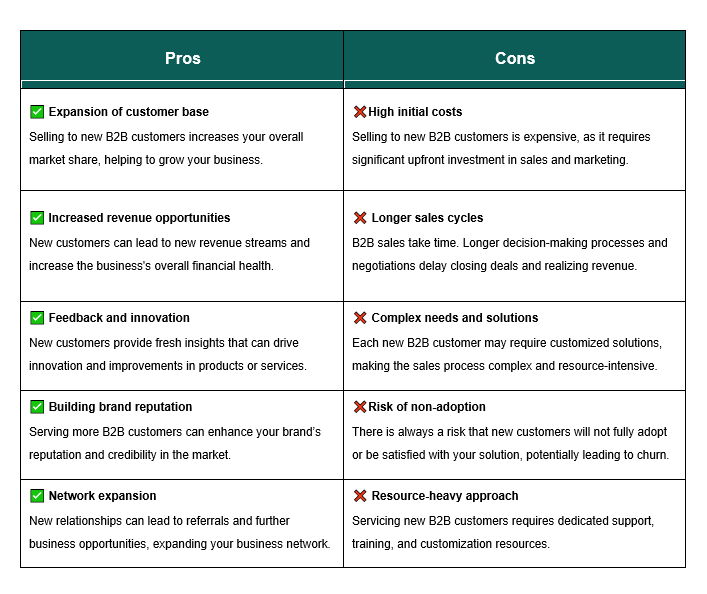
However, new business sales are not the only source of growth. Selling to your existing customers can have just as big an impact on revenue.
Existing customer sales: pros and cons
One of the biggest mistakes a company can make is ignoring the revenue potential of its existing customers.
The sales process only starts with the initial sale but doesn’t end there. There should be a consistent effort to increase the lifetime value of your customers over time.
In fact, most B2B companies will have a team specifically for this – Customer Success – who are responsible for the entire post-sale part of the customer journey, including expansion.
There are 4 ways to sell more to your existing customers using a CRM (including upsells and cross-selling), and it should be seen as a critical part of your growth strategy.
Even though selling to your existing customers is effective, there are some pros and cons you should consider first.
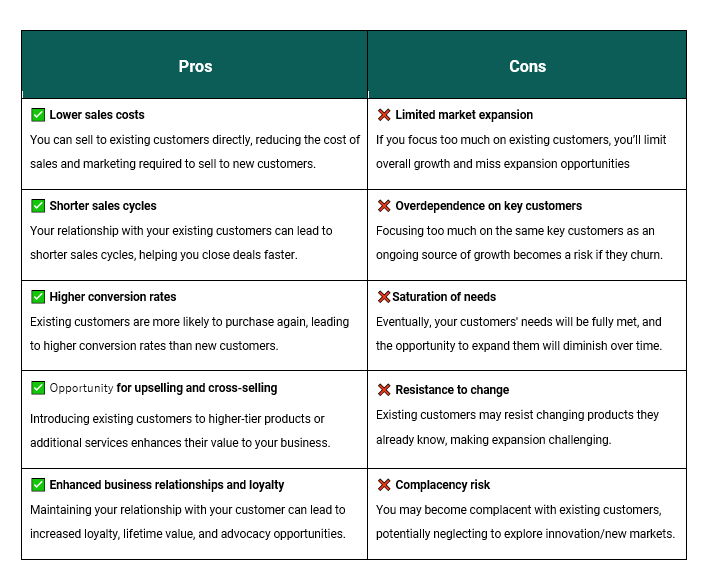
Looking for ways to turn those relationships into revenue?
Let’s explore why you should invest more in selling to your existing customers.
7 reasons why existing customers matter more than ever
Here are 7 pragmatic reasons you should start investing more in selling to your existing customers as an alternative to new business growth.
1. It’s statistically more likely you’ll sell to existing customers
We all know that selling to new customers is a numbers game – if you’re doing exceptionally well, you might expect to close around 40% of the proposals you send to prospects.
But the average close rate for most companies is closer to 20%.
Compare this to selling to existing customers, where you’ll see an average success rate of 60-70%.
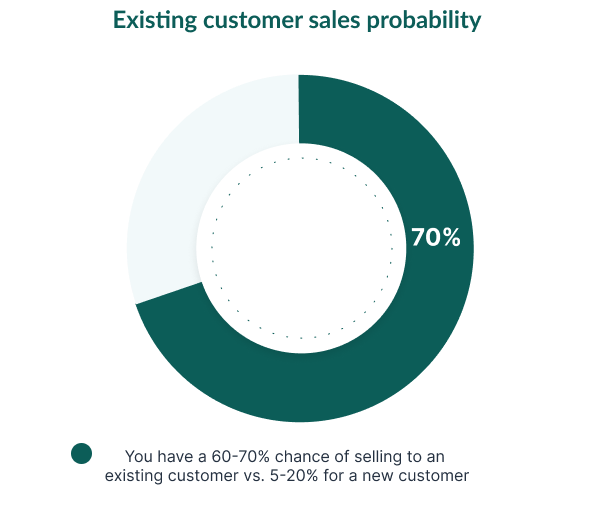
Plus, if they’re happy with their experience, your customers are 51% more likely to try other products and services from you and spend 31% more as a result.
When you focus on selling to existing customers, the odds are in your favor. But is it profitable?
2. It’s more profitable to sell to existing customers
Selling to your existing customers isn’t just a great way to increase your overall revenue – it’s also a great way to increase profitability.
Achieving anywhere between a 10-30% increase in expansion revenue from your existing customers is considered a great result.
Not only can this additional revenue help fuel your overall growth figures, but this expansion revenue has 5 unique properties that new business revenue doesn’t.
- No CAC – the customer acquisition cost is almost zero.
- Reduced sales effort – it reduces the time and attention required for a new deal.
- Increased LTV – you grow the lifetime value of each customer account you expand.
- Reduced service costs – your existing customers require less help with the set-up.
- Eliminates churn – your customers are more invested in your product.
This dramatic reduction in costs makes expansion revenue some of the most profitable and important revenue your company can generate. But is it easy to do?
3. It’s quicker and easier to sell to existing customers
In B2B sales, the length of time to close a new business deal is 4-6 months.
A big part of this extended lead-in time is because the prospect has to assess the market thoroughly and determine which vendors are the right fit before making a decision.
In contrast, selling to existing customers is up to 14 times easier and can happen in a matter of minutes, rather than months, under the right circumstances.
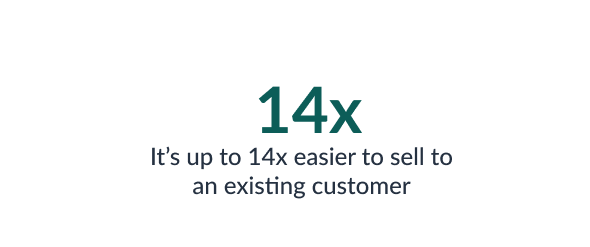
This is because they already know, like, and trust you – which eliminates almost all of the time-consuming buying processes that happen during new business deals.
Because there is no lead-in time to worry about and far fewer procurement hoops to jump through, selling to your existing customers is considerably quicker and easier.
But what happens when you close a deal with an existing customer? Does the required level of service change?
4. It’s easier and cheaper to service existing customers
When you land a new customer, the focus is always on customer acquisition cost (CAC) – i.e. how much was spent on sales and marketing to close the deal.
By comparison, there is far less focus on how much it costs to service these new customers both during onboarding and adoption.
Onboarding new customers isn’t cheap, particularly if you have a complex product or service, and it can cost companies more than $1,500 per new customer.
Even if you have a paid onboarding program in place to mitigate these costs, it still requires resources and mental overhead to deliver – distracting you from other opportunities.
On the other hand, if you’re selling to existing customers, then they already know the product really well.
This means you can dramatically reduce both the financial and opportunity costs vs. onboarding new customers and help them get value from their upsell in record time.
But does it mean you’ll be able to retain your customers for longer?
5. It will help to retain existing customers for longer
When you sign up a new customer for your product, there is no guarantee that they’ll remain a customer for the long term.
Acquiring a new customer costs 5 times more than retaining an existing one, so it’s important you do everything you can to minimize churn.
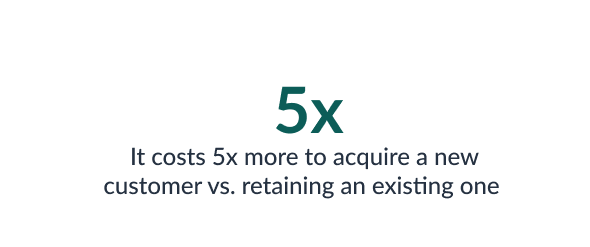
Offering an upsell or cross-sell that adds real value to your customers can be one of the best ways to retain them for longer. Here are 4 reasons why.
- Stronger relationships: spending more time with your customers and helping them achieve their business goals with your products and services strengthens your overall relationship.
- Contract terms: upselling a new feature or service could present an opportunity to add or extend contract terms with your customers, keeping them retained for longer as a result.
- Sunk-cost fallacy: the more money a customer spends with your company, the more likely they are to stick with you and see it through.
- Investment in success: the stronger the relationship with your customers, the more likely they are to see your time with them as an investment in their success.
6. It will help protect your company against economic instability
Right now, most companies are closely monitoring their finances and reducing spending.
This economic instability creates challenging market conditions for many B2B companies, resulting in things like:
- Staff layoffs
- Budget cuts
- Hiring freezes
- Lower discretionary spending
All of which contribute towards stunted growth for many businesses thanks to a lack of new business.
However, many businesses are keen to “do more with less” and consider how their existing solutions can offer an increased return on investment compared to procuring new solutions.
Investing in selling more to your existing customers can help you protect existing revenue, solve customers’ problems, and offer a route to scalable growth through expansion.
7. It will help you turn existing customers into advocates
Research by Gartner found that 75% of new customers refer to at least 3 advocacy sources to help inform their buying decisions.
Meanwhile, Deloitte discovered that new customers who have been referred by existing customers have a 37% higher retention rate.
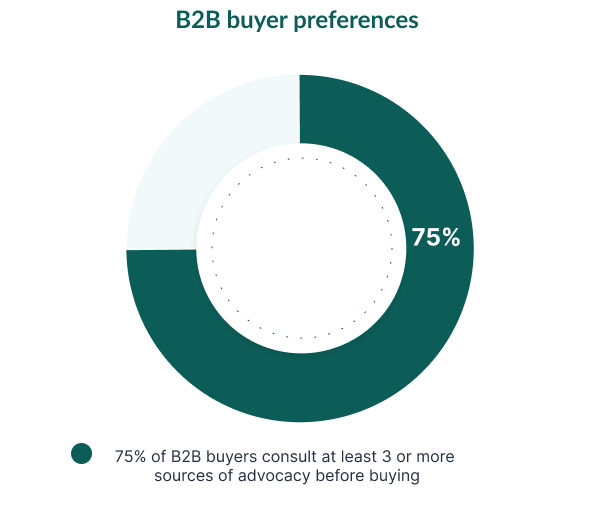
This highlights the importance of guiding your customers through the entire customer journey to not only expand their accounts with you, but become advocates, too.
By investing in selling more to your existing customers, you are investing in both immediate revenue growth through expansion and long-term growth through advocacy.
How a CRM platform helps you sell to existing customers
The more you invest in selling to your existing customers, the more revenue you’ll see in return.
However, you need the right tools to build strong customer relationships with existing customers and generate more revenue from them.
Many companies make the mistake of using generic tools like spreadsheets instead of specialist tools like a CRM platform.
It’s a mistake because a spreadsheet can’t help you:
- Create personalized marketing experiences to upsell your existing customers
- Automate communications and reminders to help your relationships thrive
- Quickly and easily segment customer data to identify expansion opportunities
If one of your business goals is to increase revenue by focusing on existing customer sales this year, then using a CRM, like SuperOffice, can help you:
- Build ongoing relationships with customers and keep consistent records
- Use data to segment your customer lists for targeted upsell campaigns
- Create personalized experiences automatically – to expand your customers at scale
- Sell to existing customers at a fraction of the cost of new customers
Using a CRM will help you work smarter, reducing the time and effort it takes to secure additional revenue by focusing on customers who already know, like, and trust you.
Ready to sell more to existing customers with SuperOffice CRM?
SuperOffice gives you all the tools you need to sell to existing customers, including:
- Powerful automation and marketing to send promotions to your customers with ease
- Robust CRM and pipeline management to help you track expansion deals
- Personalization features to give your existing customers the best possible experience
- A full suite of “best in class” tools to build long-term authentic customer relationships
Try SuperOffice today and start managing all your sales, marketing, and customer support relationships from one CRM platform.
